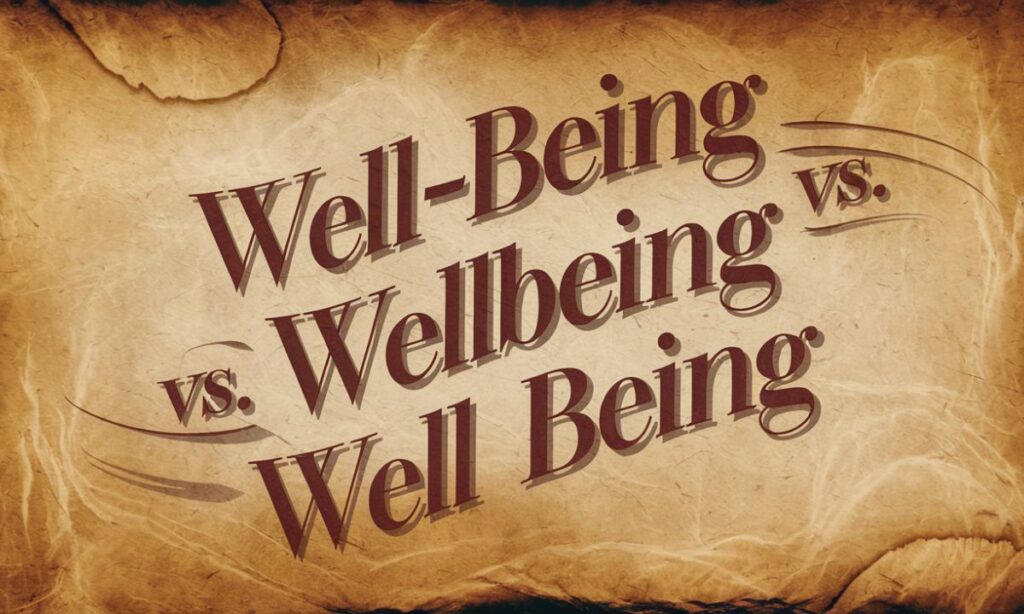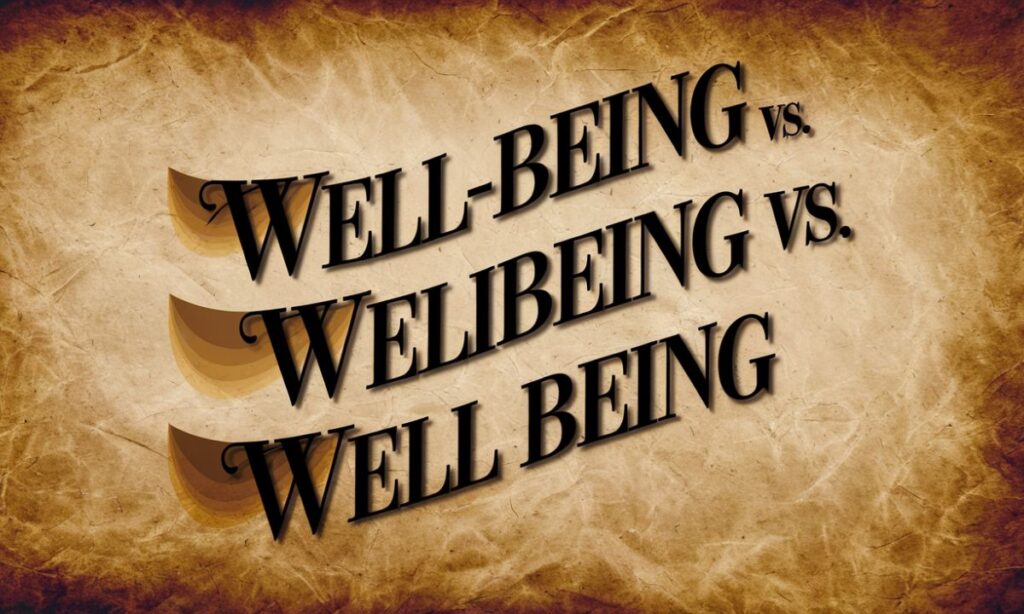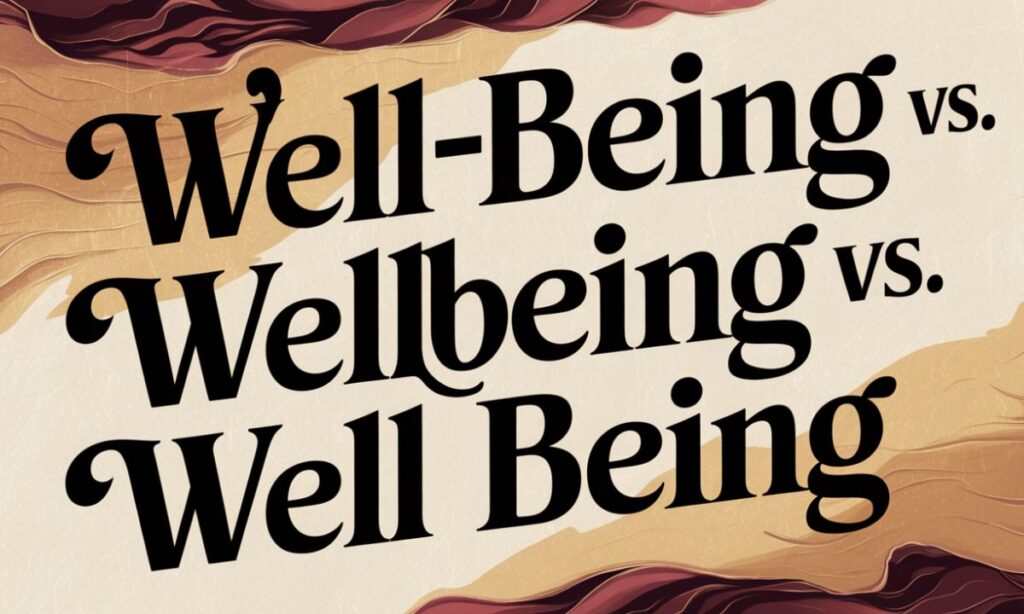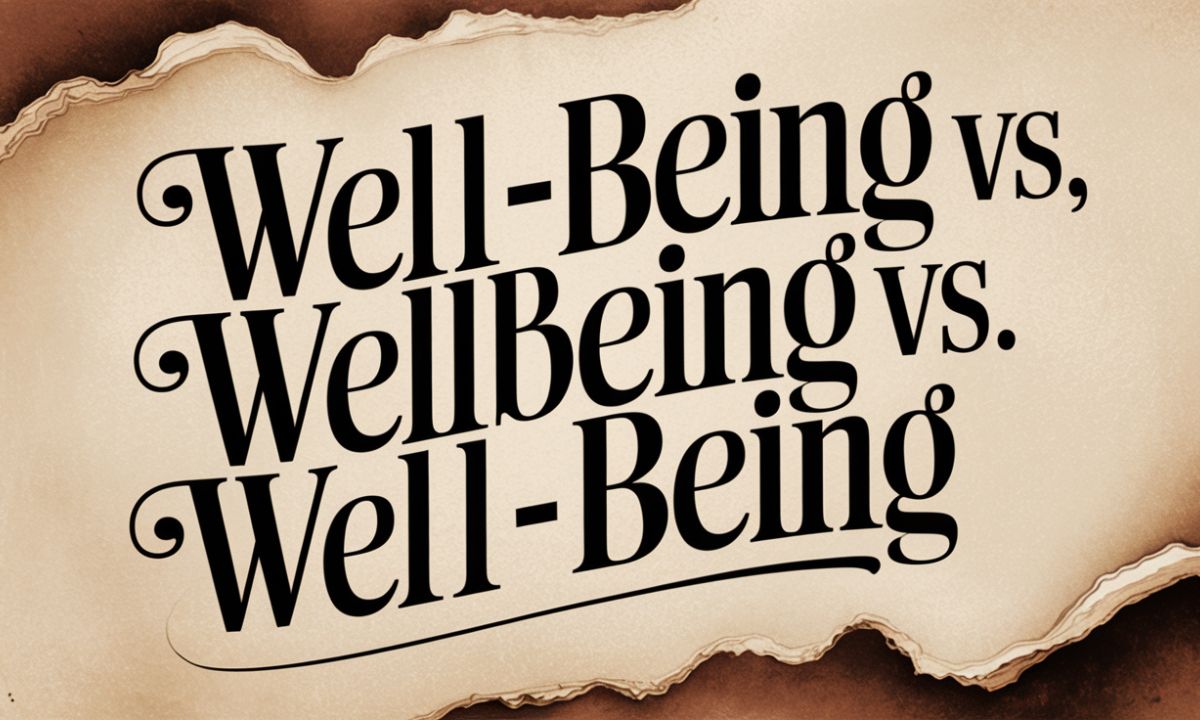Language is a dynamic tapestry of expression, where even the smallest details can dramatically shift understanding. The term well-being exemplifies this linguistic complexity, presenting writers and communicators with a fascinating puzzle of spelling and interpretation. What might seem like a trivial hyphen can actually signify profound differences in professional communication, regional preferences, and contextual nuance.
Whether you’re an academic, a business professional, or simply someone who appreciates linguistic precision, understanding the subtle variations of well-being becomes more than a grammatical exercise—it’s a window into how we conceptualize health, happiness, and holistic human experience.
This comprehensive exploration will unravel the mysteries behind these seemingly interchangeable yet distinctly different representations of a powerful concept.
Well-being vs Wellbeing vs Well Being: Understanding the Nuanced Differences
Language is a living, breathing entity that constantly evolves, and few terms demonstrate this fluidity more clearly than well-being. Writers, professionals, and language enthusiasts often find themselves puzzled by the multiple variations of this seemingly simple compound word.
Is it well-being, wellbeing, or well being? This comprehensive guide will dive deep into the linguistic nuances, regional preferences, and professional guidelines surrounding this intriguing term.
1. Well-being (Hyphenated): The Gold Standard of Professional Writing
The hyphenated version, well-being, stands as the most academically and professionally recognized format. This version is preferred in scholarly articles, medical journals, and formal documentation. The hyphen serves a critical purpose – it visually connects the two words, signaling that they function together as a single conceptual unit.
Professional Insights on Well-being
Professionals across various fields understand that well-being represents more than just a word – it’s a holistic concept encompassing:
- Physical health
- Emotional stability
- Mental resilience
- Social connectivity
- Professional satisfaction
Example Scenario: Formal Communication
In a corporate wellness report, you might write: “Our comprehensive well-being program focuses on employee wellness and holistic health strategies.”
2. Wellbeing (Without the Hyphen): The Digital Age Adaptation
The unhyphenated “wellbeing” has gained significant traction in digital and contemporary writing. Particularly in online content, blogs, and informal communication, this version has become increasingly prevalent.
Digital Landscape Trends
Digital platforms and contemporary writing styles have accelerated the acceptance of “wellbeing”:
- Simplified typing
- Character economy
- Modern communication preferences
- Web and social media influence
3. Well Being (Two Separate Words): The Least Recommended Option
Two separate words represent the least professional and least recommended format. Most style guides and professional writers actively discourage this variation.
Potential Pitfalls
Using “well being” can:
- Appear unprofessional
- Reduce writing credibility
- Create linguistic confusion
Regional Preferences in Well-being Usage

Different English-speaking regions demonstrate nuanced preferences:
| Region | Preferred Spelling | Usage Frequency |
| United Kingdom | Well-being | High |
| United States | Well-being | Very High |
| Canada | Well-being | High |
| Australia | Well-being | High |
| Digital Platforms | Wellbeing | Increasing |
Well-being Definition: Beyond a Simple Concept
Well-being transcends mere physical health. It’s a multidimensional construct representing an individual’s overall life quality, encompassing psychological, emotional, and social dimensions.
Comprehensive Well-being Components
- Emotional Well-being
- Self-acceptance
- Positive relationships
- Emotional resilience
- Physical Health
- Regular exercise
- Nutrition
- Sleep quality
- Mental Aspects
- Stress management
- Continuous learning
- Psychological flexibility
Linguistic and Professional Recommendations

Style guides serve as authoritative sources for grammatical consistency. The Chicago Manual of Style and Associated Press consistently recommend the hyphenated “well-being” as the standard format.
Dictionary authorities like Merriam-Webster list the hyphenated version first, subtly indicating its primacy. These recommendations stem from a desire to maintain clarity, precision, and professional communication standards across various writing contexts.
Style Guide Perspectives
- Chicago Manual of Style: Recommend hyphenation
- Associated Press: Prefer “well-being”
- Merriam-Webster Dictionary: List hyphenated version first
Usage Recommendations
Navigating well-being’s spelling requires context-specific strategies. In formal academic writing, always use the hyphenated “well-being.” Digital and informal communications can tolerate the unhyphenated “wellbeing.” Professional documents should strictly adhere to the hyphenated version.
The key is consistency—choose one format and maintain it throughout your document to ensure coherence and credibility.
- Formal Contexts: Always use “well-being”
- Digital/Informal: “Wellbeing” is acceptable
- Academic Writing: Stick to “well-being”
- Professional Documents: Hyphenated version
Is Well Being Hyphenated
In professional and academic writing, “well-being” is indeed hyphenated. The hyphen serves a crucial linguistic function by connecting the two words, creating a compound noun that represents a holistic state of physical, mental, and emotional health.
Style guides like the Chicago Manual of Style and Associated Press consistently recommend using the hyphenated version when describing an individual’s overall quality of life and personal wellness.
Is Wellbeing Hyphenated

Technically, “wellbeing” without a hyphen is not the standard recommended spelling. While it has gained popularity in digital and informal writing, most formal publications and professional documents prefer the hyphenated “well-being”.
Digital platforms and contemporary writing styles have increasingly embraced the unhyphenated version, but traditional linguistic standards still favor the hyphenated format.
Wellbeing Vs Well-Being
The primary difference between “wellbeing” and “well-being” lies in their formality and perceived professionalism. “Well-being” is considered the more traditional and academically accepted spelling, particularly in scholarly articles, medical journals, and professional documents.
“Wellbeing” represents a more modern, streamlined approach that has emerged with digital communication, but it may not be as universally accepted in formal contexts.
Should Well Being Be Hyphenated
Yes, “well being” should be hyphenated in most professional and academic writing. The hyphen clarifies that these two words function together as a single conceptual unit.
When writing in formal contexts such as academic papers, professional reports, or official documentation, always use “well-being”. This approach ensures clarity, maintains linguistic precision, and aligns with most style guide recommendations.
Expert Quote
“Language evolves, but precision remains paramount. In well-being discussions, clarity trumps trendy variations.” – Dr. Emily Richardson, Linguistic Researcher
Conclusion: Navigating the Well-being Landscape
While linguistic variations exist, “well-being” remains the most universally accepted and professional format. Consistency and context are key when choosing your preferred spelling.
Pro Tip: Select one version and maintain it throughout your document for maximum coherence and professionalism.

